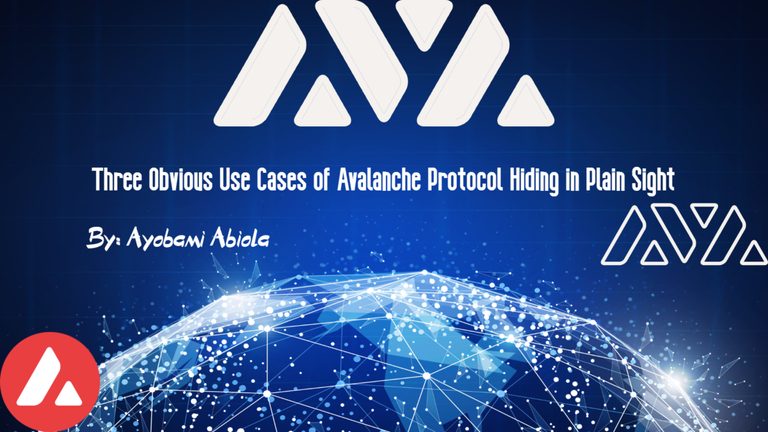
Avalanche subnets can easily solve many problems. Since they can be created with the consensus and VMs of any blockchain, just like the Athereum subnet (which is just like Ethereum), there can be crypto-backed tokens on Avalanche blockchains running their own native consensus.
Avalanche Protocol Did it!!!
Congratulations to AVA labs for the successful completion of their public sale in a short period of time. Within 4.5hours a sale of $42Million was completed, this is an achievement that is uncommon for an ICO especially when the ICO bubble has busted. To cap it all, contributions are seen from the Ethereum Genesis wallet. It is a pointer to the fact that the world will never get over innovative ideas, they will always take the world just like the internet did.
Why many People are Bullish about Avalanche

@born2hodl on twitter posted some interesting truths about why he is bullish about Avalanche protocol. You can find his reasons here, the tweets cover the opinions of some huge crypto personalities like Vitalik Buterin and Charles Hoskinson.
Words from John Wu
John Wu, the president of AVA labs, began exploring the potential use cases of Avalanche protocol in sports on his website. In a two-part series, he dug into details of the reasons why Avalanche blockchain will be a blockbuster to the entertainment industry especially when the Covid19 pandemic has revealed to the world that sports entertainment is a necessity for human lives and not a luxury. Sports Betting and sport NFTs can unlock a new wave of unlimited potential to solve inherent industry challenges with Avalanche Subnets.
Let's Go…
If you have not read about my introductory post about Avalanche, please do now so you can understand what it is all about (I am sure you’ll enjoy it). In this article, I will also unveil three obvious use cases of the Avalanche protocol.
One great feature of the Avalanche protocol is ‘subnet’, it allows different blockchain consensus both private and public to run on the blockchain. Not just the consensus, the network can run virtual machines (VMs) from any blockchain. This opens up a new wave of potentials with smart contracts- contracts from multiple blockchains can co-exist on the same blockchains.
First… Atomic Swaps
With the subnets, I see a new age for Atomic Swaps, let me tell you what I mean.
Blockchain interoperability has been a huge hurdle as I pointed out in the first article. An article by Bart Wyatt on the Cointelegraph on why interoperability is the key to the future of innovation and Adoption pointed out the exigency of the situation.
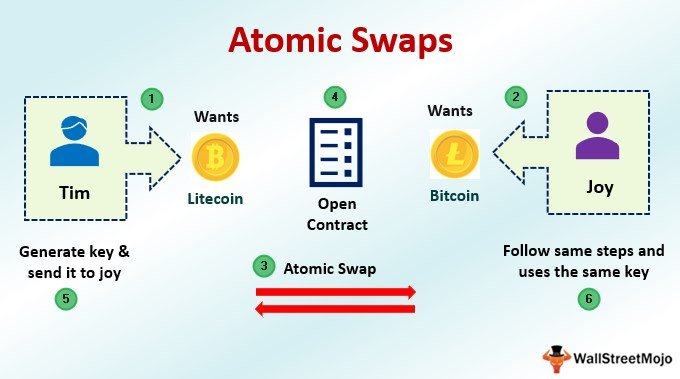
Source
Why?
Traders who are wary about the safety of their digital assets in the custody of a centralized exchange often want them to be in a wallet they have the private key yet they want to take advantage of the price fluctuations between coins from different blockchains. The trust in centralized exchanges has been on a downward slope with each hack chipping off a huge portion of the trust. Atomic swaps have made things better by allowing anyone to take advantage of smart contracts to exchange coins from different blockchains without having to send coins out of their wallets.
What Atomic Swaps lack
While explaining what atomic swaps entails, Mike Uczciwek from Blockgeeks highlighted some weaknesses despite its great potentials. Speed of execution and lack of compatibility are major plot holes in atomic swaps. The difference in speed of the originating blockchains is a great deterrent to atomic swaps. You can imagine wanting to pay ether for some BTCs, and it took forever for the coins to arrive your wallet.
Aside from this, there is the limitation of transaction fees especially for blockchains like Bitcoin and Ethereum. Da Hongfei (@dahongfei), the founder of Neo blockchain, reported, a few hours ago, that the Ethereum gas fee is approaching a new all-time high. This happens because of network congestion and its inability to handle more transactions per second.
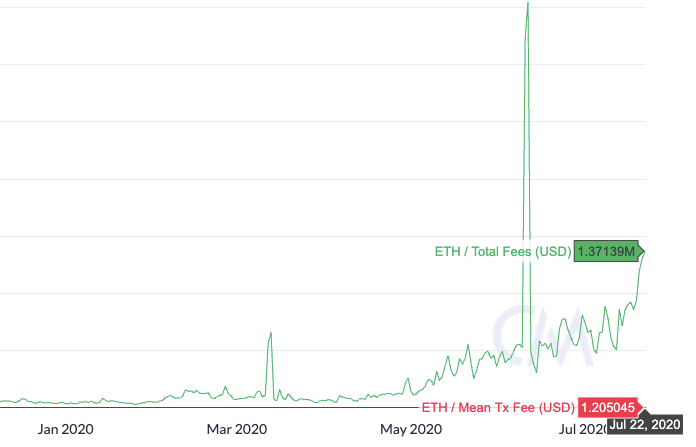
Source: @dahongfei
A high transaction fee has crippled the adoption of some great innovations on Ethereum as we will discuss more later. A trader will definitely be discouraged to use atomic swaps because of these reasons despite its advantages.
There are some other ‘not so great’ substitutes to Atomic swaps, one that stood out was crypto-backed tokens. With this, a token can be created on a blockchain to mirror another coin from another blockchain. An example is Wrapped BTC (WBTC) on Ethereum blockchain. The limitation of this is that there will always be a weakness since there is a disconnect between the token and live data feed of the actual coin it is mirroring. There is no way to actually mirror the exact price per time of the actual coin which is one major weakness of many asst-backed cryptos today. Another challenge is that tokens like these will always have the inherent challenge of the blockchain they are on, for example, WBTC will always carry high tx fees since it is on the Ethereum blockchain.
What Avalanche Protocol can do to Atomic Swaps
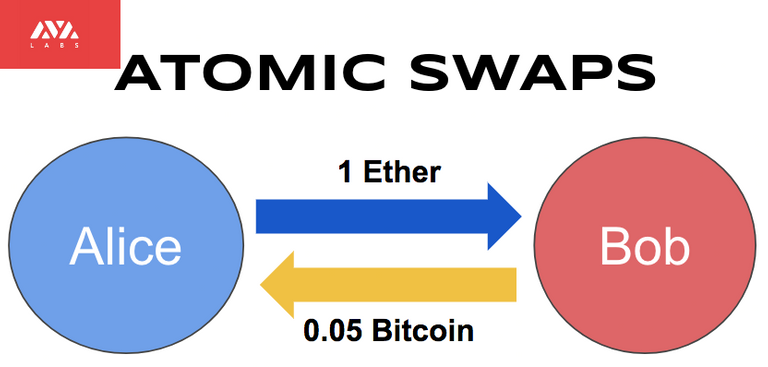
Avalanche subnets can easily solve this problem. Since they can be created with the consensus and VMs of any blockchain, just like the Athereum subnet (which is just like Ethereum), there can be crypto-backed tokens on Avalanche blockchains running their own native consensus. Atomic swaps can exist on Avalanche to exchange or swap these crypto-assets just like Dexes without having to trust any token in the hands of any centralized exchange.
The reinvention of atomic swaps will definitely drive its adoption and launch a new era of Decentralized Finance (Defi) such as is the vision of the Avalanche protocol- to create easy to use tools for developers to launch DeFis. There will be no speed delay since the transaction speed of swaps will be the same as sending Avax tokens on the network with a minimal fee. There is no doubt that Avalanche’s main net is a key solution to the issue of interoperability of blockchains that Bart Wyatt from Cointelegraph discussed in the article linked above.
Interestingly Avalanche integrated with Chainlink to utilize its data and data oracle so that asset-backed tokens can tap into live data like market prices so they can function as they ought to. Thus, crypto-backed tokens created by subnets will surely carry the actual market price of the coins/tokens they mirror. Isn't that a new generation of Defi?
Second… Other Asset-Backed Tokens
The same can be said of physical asset-backed tokens created on Avalanche subnets, they can tap into the speed and low transaction fees of the Avalanche protocol to really be what they are meant to be. With the Chainlink integration, stablecoins, real estate tokens, gold coins, etc. can really mirror their actual price without creating a deficit or cheating another party.
Third… Non-Fungible Tokens NFTs
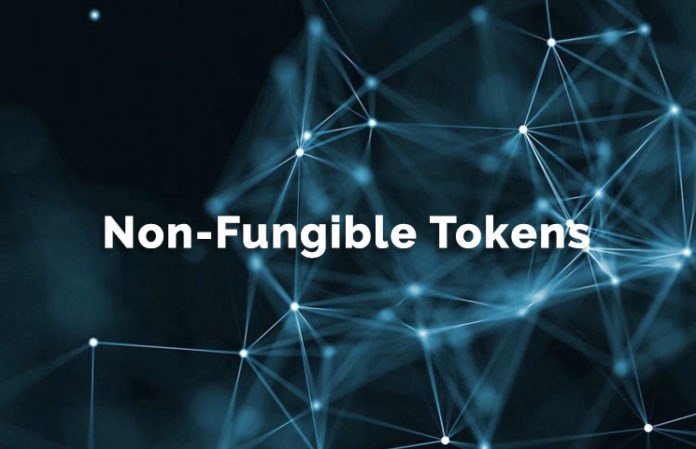
Source
NFTs are tokens that represent assets that are unique and cannot be divisible. The value of an NFT is unique and different from any other even if their class is the same. I wrote an in-depth article on NFTs a few weeks ago, do check it out. An NFT can represent anything, it can be a physical asset, an art, picture, in-game collectible or character, etc. More recently the use of NFT in gaming has become widely known and adopted, the exciting part is that NFTs can be used in different games. A hammer NFT can be adopted for use in multiple games so far the developer programmed it so. The set back for NFTs built on Ethereum (where it came from) is the issue of huge fees when interacting with the smart contract especially when you want to buy or sell them.
The inception of Avalanche protocol and its ability to be able to run VMs and smart contracts from any blockchain means a great deal for the NFT market. It means NFTs on Ethereum blockchain and other blockchains can coexist on a blockchain without the challenge of huge fees, throughput, and consequently speed of transactions. It will be possible to have a game that will accept NFTs from Ethereum, Digibyte, EOS, etc. on Avalanche. John Wu also stated the potential of NFT on the Avalanche protocol in his article.
Enough for Now… Avalanche for the Win
These are a few obvious use cases of Avalanche, I am of high expectations for what will be the first set of applications on the network when it is on the main net. Do you know Coinex is already promising an airdrop of 20,000AVAX once the main net launches
Till next time, Keep on Keeping on!.
Special thanks to Giuseppe Frank (@aCryptoBiker) for his help in the first and second articles.
For more Information
Website | Whitepapers | Twitter | Discord | GitHub | Documentation | Explorer | Telegram | Facebook | LinkedIn | Reddit | YouTube
Posted from my blog with SteemPress : https://cryptostocksreviews.org/three-obvious-use-cases-of-avalanche-protocol-hiding-in-plain-sight/blockchains/
This is a super cool review, thanks for the follow up. So many cool projects out there its becoming hard to keep up with everyone
Thanks so much for the support. 👍 💪
Congratulations @ayobami99! You received a personal badge!
You can view your badges on your board And compare to others on the Ranking
Support the HiveBuzz project. Vote for our proposal!